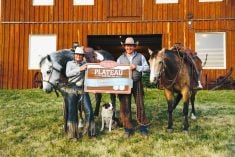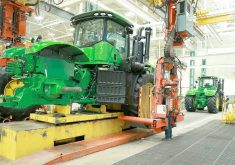Parallel stories quoting the same leading economist appearing to say contradictory things about investment in farmland bring a wry smile and provide a lesson in the importance of psychology and behavioural approaches to finance.
Investment News,which describes itself as the leading news source for financial advisers, has renowned Yale Professor Robert Shiller advising investors to buy farmland.
“My only bullish call is farmland,” Shiller told the annual conference of the Investment Management Consultants Association in Las Vegas. The headline boldly declares, “Green acres best bet for making green, Yale’s Shiller says.”
Read Also

Guarding against misinformation: Do you believe in house hippos?
Misinformation and disinformation run rampant in today’s digital age. Farmers must be wary of the digital dangers and know how to keep themselves safe.
By contrast,The Economistmagazine last month, in an article headlined, “Sowing bubbles: Regulators growing increasingly worried about steep cropland prices,” featured a comment from Shiller describing American farmland as “my favourite dark-horse bubble candidate for the next decade or so.”
The apparently contradictory messages are in fact perfectly consistent with one another and with Shiller’s behavioural approach to asset prices, set out most famously in his bookIrrational Exuberance.
As he explained there, most bubbles start with a strong plausible investment case grounded in fundamentals especially in the early stages, but internal dynamics can then carry the movement in prices too far as price rises stimulate more buying and a bandwagon effect.
Whether now is a good time to buy farmland depends on where in the bubble process the market has reached.
(Ir)rational bubbles and willing fools
It is perfectly possible to argue farmland is a good investment now, even though it might become a bubble later. It is also possible to believe a bubble is already forming but that it will be profitable to ride along with the herd for the next few months or even years.
Identifying compelling investment narratives in the early stages, getting in near the start, riding the wave and then pulling out before it finally collapses has been a highly profitable investment strategy. The secret is not to get carried away by the hype or the self-serving talk about fundamentals.
It is precisely the strategy that financier George Soros used to exploit the bubble in real estate investment trusts in the 1970s.
“I was present at the creation and, fresh from my experience with conglomerates, recognized their boom/bust potential,” he wrote in a famous research note.
“The shakeout is a long time away. Before it occurs, mortgage trusts will have grown manifold in size and mortgage trust shares will have shown tremendous gains. It is not a danger that should deter investors at the present time. The only real danger at present is that the self-reinforcing process may not get underway at all.”
It was why Soros could warn in 2010 that gold was “the ultimate bubble,” even while his hedge fund established a large long position in the SPDR Gold Trust and iShares Gold Trust before selling it out in Q1 2011.
Fundamentals alone are never enough to explain asset price movements. As theLexcolumn of the May 19Financial Timesnotes, the best explanation for recent commodity price movements blends classic supply-demand-inventory analysis with the impact of monetary policy and liquidity, and shifting psychology.
In the face of waves of irrational exuberance that first create and then destroy vast quantities of wealth, the right response for both regulators and the media is to maintain healthy skepticism about talk of paradigm shifts, new eras and new asset classes.
A fool and his money…
Warnings might not make a huge difference. As the adage goes, “A fool and his money are soon parted,” and there have been plenty of willing fools in recent years. But regulators should still try to understand the risks and highlight them and educate the public.
It is encouraging that the Kansas City Fed, led by veteran supervisor Thomas Hoenig, has taken the lead in warning about the dangers of rising farmland prices. The Federal Deposit Insurance Corporation, led by equally careful supervisor Sheila Bair, this year held an event titled, “Don’t Bet the Farm,” according to theEconomist.
Greed and fear are emotions hardwired into investor behaviour. But at least regulators can avoid pumping up bubbles even more by lending their imprimatur to them, as former Fed chairman Alan Greenspan appeared to do with Internet stocks and equities, and then the housing market and securitization.
Meanwhile investors and analysts should learn from the masters and incorporate psychology, bubbles and crashes into their approach to asset pricing alongside more conventional measures of fundamental value.
John Kemp is a Reuters market analyst.
———
“Myfavouritedark-horse bubblecandidateforthe nextdecadeorso.”
ROBERT SHILLER YALE UNIVERSITY














